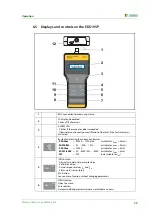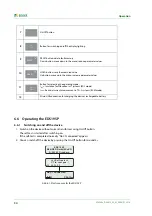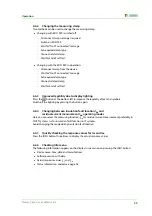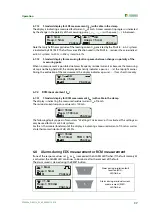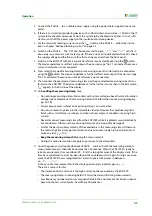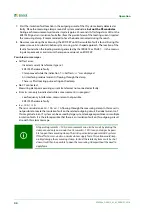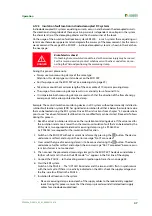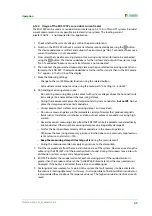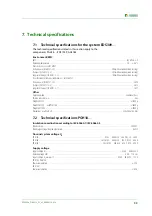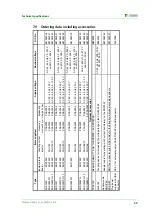
Operation
45
EDS309x_D00012_03_M_XXEN/11.2014
6.12.2 Insulation fault location in a system with a permanently installed EDS system
The EDS195P can also be used in a permanently installed EDS system (EDS460/490 or EDS461/491).
In a large, complex IT system the main outgoing circuits are often monitored by the permanently in-
stalled EDS system. Once the main outgoing circuit affected by an insulation fault is detected, the
search is continued from there using the portable EDS195P.
During this process the EDS195P uses the locating current pulse from the permanently installed EDS
system (IRDH575, PGH47…). The PGH18… is not required for this application.
The PGH18… is not included in the items supplied with the EDS3090 and EDS3091. Insulation fault
location is therefore only possible in electrically live IT systems. Also follow the operating instruc-
tions for the permanently installed EDS system.
Example: The insulation monitoring device has signalled an insulation fault below its response value
and started the permanently installed EDS system. The main outgoing circuit affected by the insula-
tion fault has been detected. Proceed as follows for the further insulation fault location:
1. Set the mode of the EDS system to continuous insulation fault location:
– IRDH575: On the "EDS Setup" menu set the "EDS on" mode
– PGH471: Press "Start/Stop" button
2. Switch on the EDS195P without a current transformer connected by pressing the
button.
The device undertakes a self-test and outputs the error message "No CT connected" because a
current transformer is not connected.
3. Now select the type of measuring clamp or measuring current transformer to be connected
using the
button. The device undertakes a further self-test and outputs the error message
"No CT connected" because a current transformer is not connected
4. Then connect the pre-selected measuring clamp or the pre-selected measuring current trans-
former to the EDS195P. The device undertakes a further self-test and is then in the EDS mode.
"I
Δ
L
" appears in the first line of the display.
5. On handling measuring clamps note:
– Do not bring measuring clamp into contact with system voltages above the nominal insula-
tion voltage. (See nameplate on the measuring clamp with information on measuring cate-
gory, e.g. CAT III)
– Always keep contact surfaces on measuring clamp's iron core clean.
– Do not use measuring clamp in the immediate vicinity of devices that produce magnetic fields
such as transformers or chokes and also not near adjacent conductors carrying high currents.
– Never disconnect measuring clamp from the EDS195P while it is placed around electrically
live conductors. Otherwise the measuring clamp may be irreparably damaged!
– Aim for the best possible symmetry of the conductors in the measuring clamp.
Otherwise the measuring clamp may go into saturation due to an excessively high load cur-
rent and cause an alarm
I
Δ
n
>10 A.
–
Keep the measuring clamp still
during the measurement!
– During the measurement do not apply any pressure to the clamp limb.
6. Place the measuring clamp around the green-yellow wire between the IRDH575 or PGH47…
and earth. If the EDS195P does not react, the insulation fault has an excessively high impedance
and cannot be detected. Locating current pulses detected are indicated using the symbol.
Risk of electric shock!
On touching live uninsulated conductors, death or serious injury may be caused.
For this reason avoid any contact whatsoever with active conductors on posi-
tioning the measuring clamp.
DANGER
Summary of Contents for EDS3090
Page 6: ...Table of Contents 6 EDS309x_D00012_03_M_XXEN 11 2014...
Page 26: ...Considerations prior to use 26 EDS309x_D00012_03_M_XXEN 11 2014...
Page 62: ...Frequently Asked Questions 62 EDS309x_D00012_03_M_XXEN 11 2014...
Page 65: ......
Page 66: ......
Page 67: ......



